Appendix
Global space activity by category, 2007-2027
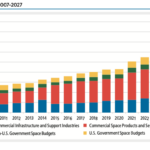
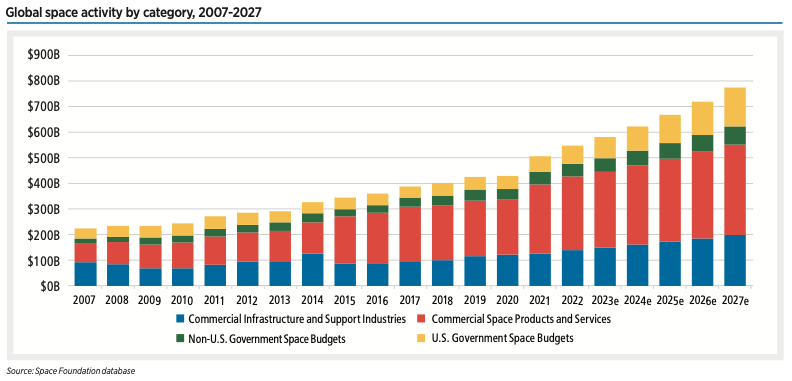
The global space economy totaled $546 billion in 2022, 8% higher than 2021 — and it could reach $772 billion by 2027, according to Space Foundation analysis. Commercial space continues to make up the majority (78%) of this total, but preliminary data shows that 81% of governments with space programs increased spending in 2023.
Astronauts by top nations
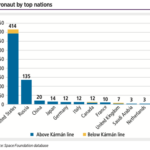
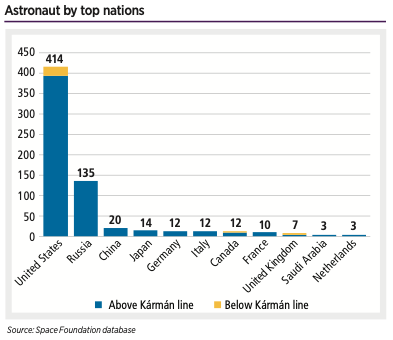
The majority of astronauts (95%) have also reached the Kármán line at 100 km — the internationally recognized boundary of space.
Launch failures by number of satellites lost, 2003-2023
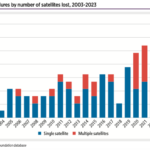
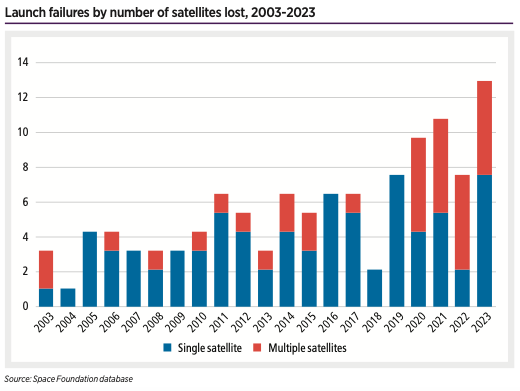
In 2023, launch failures resulted in the loss of 31 satellites, an increase of 48% from 2022.
Cumulative spacecraft on orbit, 1957-2023
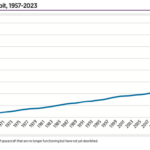
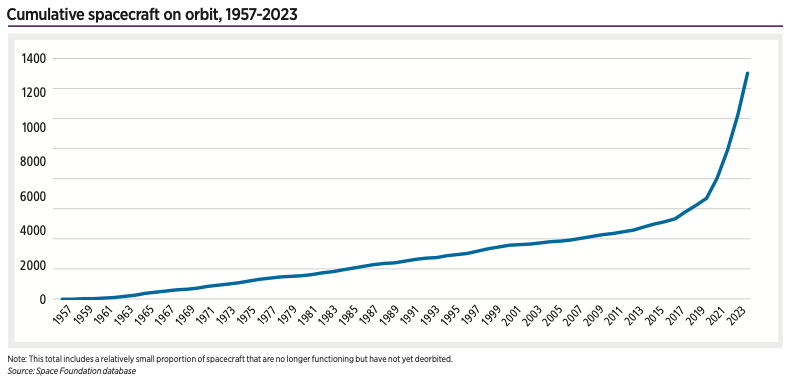
Federal agencies in 2014 estimated by 2022 as many as 43 commercial satellites a year would head to orbit. Instead, more than 50 times . . .
NASA Civil Servant Workforce, FY 2013-2023
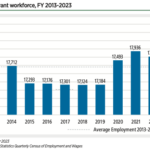
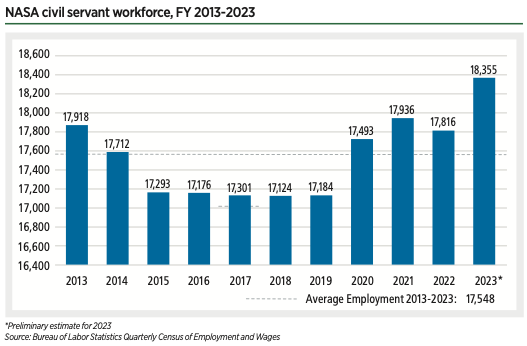
NASA employed approximately 18,372 employees in 2023. This is an increase of 3.1% over employment in 2022.
Space insurance industry estimates, 2003-2022
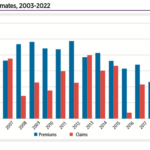
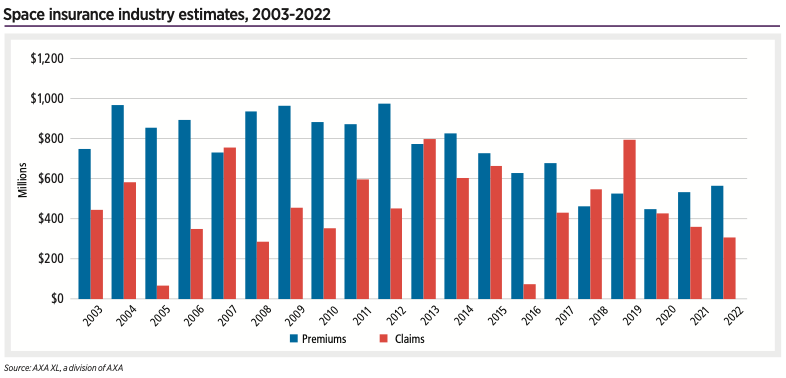
As satellites get smaller and cheaper and companies pivot to building LEO constellations rather than purchasing single large satellites for GEO orbit, many operators are foregoing insurance after launch altogether.
U.S. space private industry employment, 2012-2023
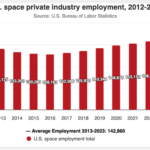
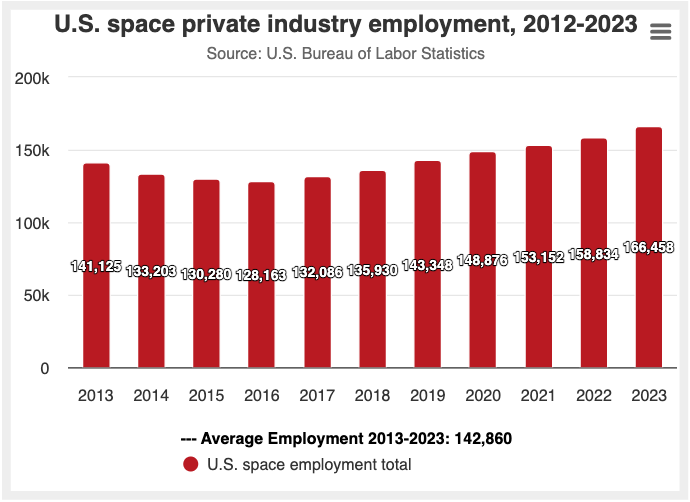
Some experts in the space sector worry that high inflation may put significant pressure on aerospace firms as the cost of materials increases rapidly.
Astronauts by private sector
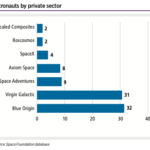
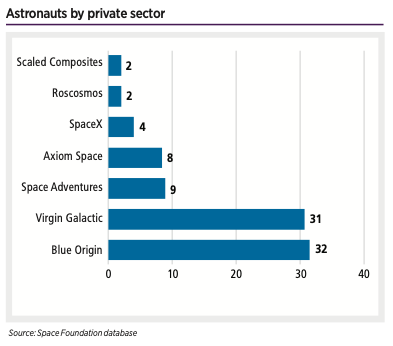
As of mid-March, 685 astronauts have reached at least 80 kilometers above the Earth’s surface. This total includes 86 private astronauts, 22 times as many as there were two decades ago.
January, February launches 2022-2024
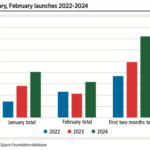
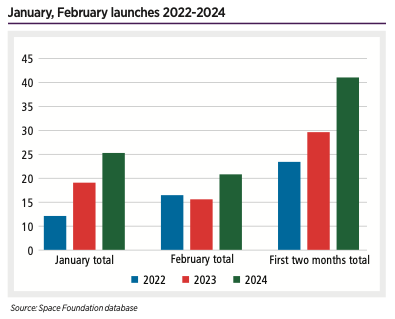
The first two months of 2024 saw an incredible pace of launches. The record set in 2023 could topple if two players alone make their goals.
Spacecraft deployed by payload type, 2021-2023
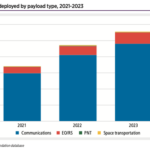
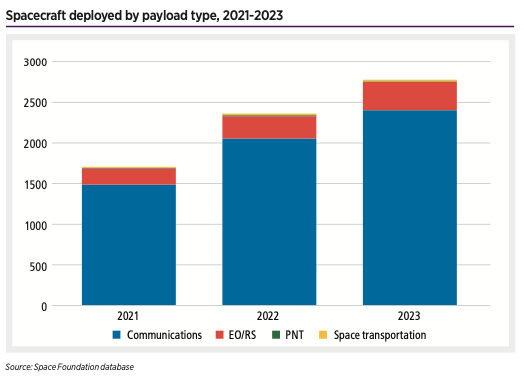
Commercial satellites accounted for 90% of space-craft launched in 2023, with communications satellite constellations leading the pack.